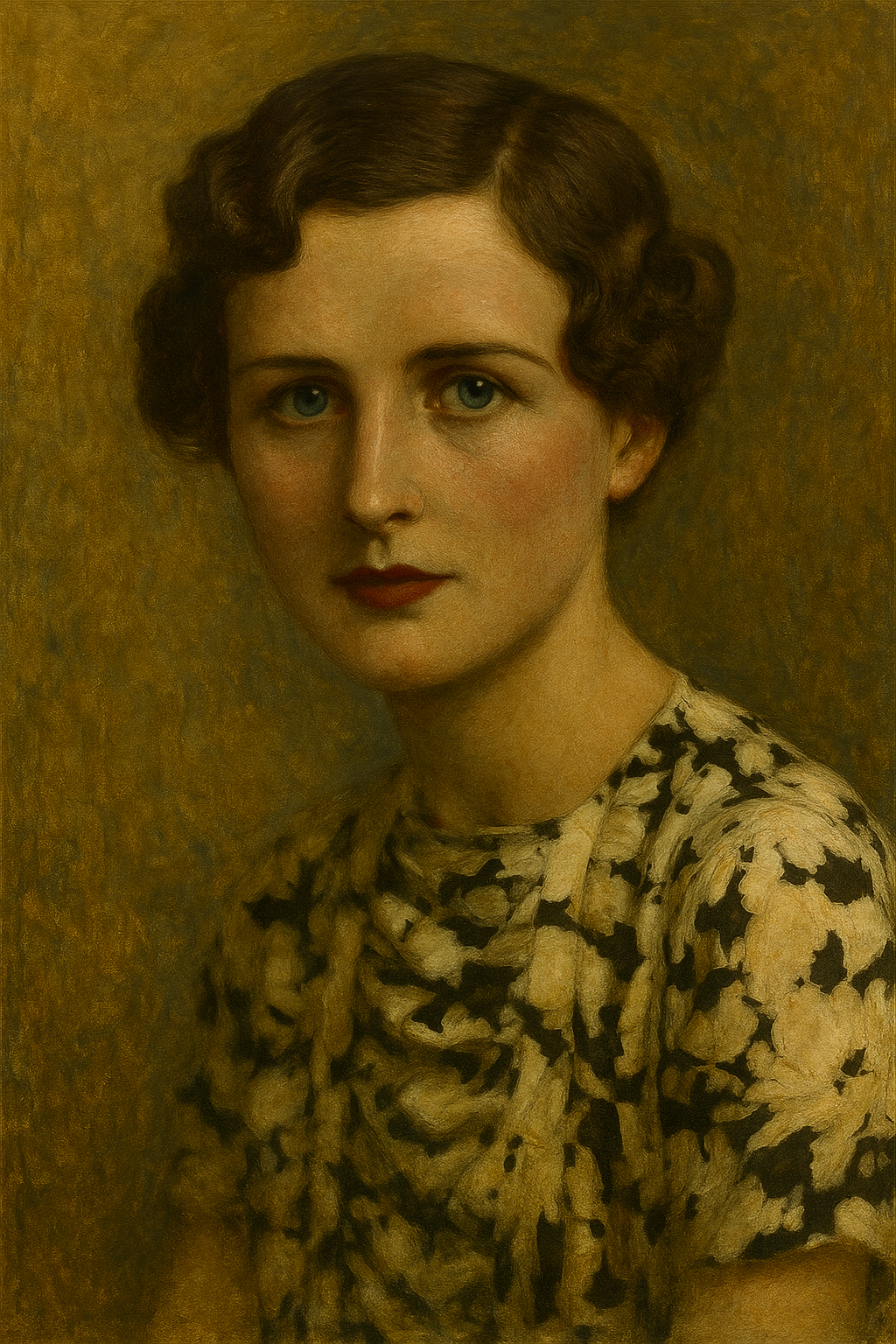
Nancy Mitford: The eldest sister and sharpest Wit in the Mitford Clan
Share
Nancy Freeman-Mitford was born on November 28, 1904, the eldest daughter of David Freeman-Mitford, Lord Redesdale, and Sydney Bowles. She was born into the aristocratic world of Pre-WWI Britain.
From an early age, Nancy displayed a sharp intellect. Close with her father, Lord Redesdale (known in the family as "Farve"), they both had a shared delight in teasing and affectionately mocking others—a family pastime, really.
Below: Nancy (c. 1960s) and her life in Paris.

Though Nancy had little formal education, she devoured books from her father’s vast library. Her younger sister Deborah later remarked on Nancy’s impeccable taste and flair for storytelling, traits that defined both her social life and literary career.
Nancy Mitford was the oldest of Lord Redesdale’s seven children. Ironically, she's probably best remembered for “You and Non-You,” about class distinction in speech, which was originally published in Noblesse Oblige. Her other works are far more interesting.
Her prewar novels are farcical scoops of upper-class goings on in Scotland, London and the West Country, and she ended her career as a distinguished historical biography. But immediately after the war, she published her masterpieces, the pursuit of love and love in a cold climate. They described the affairs of a large, eccentric, aristocratic family, and they are highly autobiographical.
Below: a famous photo of Nancy, bottom left, with her sisters Diana (bottom right) Unity (top left) and Deborah).

Writing to Shop
Nancy’s motivation to begin writing was charmingly blunt: she wanted to earn £100 so she could buy a few luxuries in life.
Her first novel, Highland Fling, was published in 1931. It didn’t set the world ablaze, but critics found her wit sharp and refreshing. After the second world war, Nancy hit her stride with The Pursuit of Love (1945), a romantic comedy inspired by her own eccentric family.
This was followed up with Love in a Cold Climate (1949), filled with sharp wit and aristocratic antics.
Marriage, “Prod,” and Gossip
Nancy’s first serious romance was with Hamish St. Clair Erskine, a charming young aristocrat and close friend of Peter Rodd. Nancy was devoted to him and hoped to marry him, but he never proposed. It later became widely believed Hamish was gay. There were long-standing rumors (though never fully substantiated), that Hamish had a brief relationship with Nancy’s brother Tom (mentioned in the BBC series, Outrageous).
Below, a formal portrait of Nancy in 1932 by the society photographer, Bassano.

In 1933, Nancy married Peter Rodd—known in the family as “Prod.” He was, by all accounts, a charming but ineffectual man, and the marriage cooled.
After the initial successes of her novels, Nancy became an acclaimed historical biographer in the 1960s. Her subjects included Madame de Pompadour (1954), The Sun King (1966), and Frederick the Great (1969).
Paris, Palewski, and Unrequited Love
Nancy moved to Paris permanently in the late 1940s, shortly after her marriage to Rodd flatlined. She settled into a pied-à-terre on Rue Monsieur, with a small courtyard—an oasis in the heart of the Left Bank. It was here she hosted legendary dinner parties and lived out her Parisian fantasies.
The new man in her life was Gaston Palewski, a French diplomat and aide to Charles de Gaulle. Nancy adored him. He was already married, and never fully reciprocated her romantic devotion. Still, their connection endured until the end of her life. He inspired characters in several of her novels, most notably Fabrice in The Pursuit of Love.
Final Years and Quiet Grace
Nancy was diagnosed in the late 1960s with Hodgkin’s lymphoma, and the illness caused her considerable pain. Still, her letters retained their usual sparkle.
In one poignant letter she wrote to her sister Jessica, who was living in America, she said, “Darling Sue, I'm in such extremities of pain. I don't write, as it's too depressing for you. I know Debo doesn't care for such letters. Yesterday, nothing was any good. I've got a horrid old nurse I hate. She gave me an injection. Isn't it odd? The funny thing is there's moments of happiness, especially now that spring is here. But the pain is fearful.”
Nancy Mitford died on June 30, 1973, at age 68. Despite everything – heartbreak, illness, and aristocratic absurdity—Nancy never lost her charm or her wit. Her words, much like her spirit, endure with elegance and irreverence.
“I am quite looking forward to heaven,” she once quipped. I expect it will be delightful and so many of my friends will be there.”
Nancy Mitford Reading List
Note: If you click on one of the links below and purchase, I may earn a small commission (literally pennies). It doesn’t cost you a thing, but it truly helps support the time, research, and storytelling that go into bringing these fascinating lives to light — through words, art, and a lot of late-night tea. /EB
The Penguin Complete Novels of Nancy Mitford (Kindle edition)
Highland Fling (1931) Nancy’s first novel published in 1931.
Wigs on the Green (1935) A political satire mocking British fascism (banned in the family. Was withdrawn from circulation until 2010, with an introduction by Charlotte Mosley, Nancy’s niece).
The Pursuit of Love (1945) A romantic comedy inspired by her own eccentric family.
Love in a Cold Climate (1949) Continuation of 'Pursuit', filled with sharp wit and aristocratic antics.
The Blessing (1951) A cross-cultural comedy of manners.
Madame de Pompadour (1954)
Noblesse Oblige (1956), edited by Nancy Mitford)
Don't Tell Alfred (1960) Final installment in her Fanny trilogy.
The Sun King (1966)
Frederick the Great (1969)
***
Take a moment to explore our new, elegant portrait of Nancy Mitford, inspired by the modern post-war style with an expressionist edge, and part of our exclusive *Mitford Series* collection.
And for more reading on the Mitford family, visit our reading list here.
